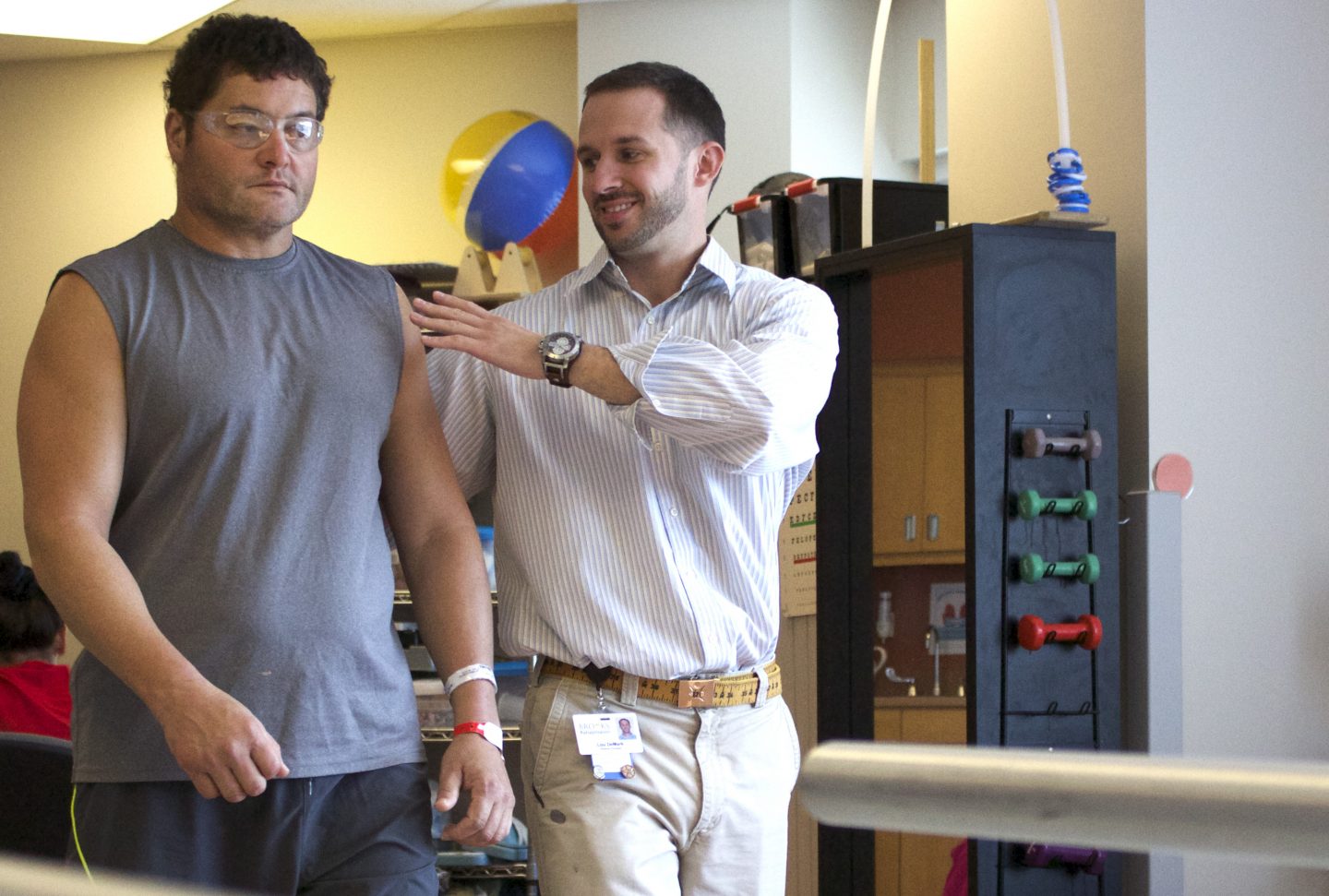When did Taking a Step Backwards Become a Good Thing?

Back to physical health resource hub
Helping patients move forward in their recovery has always been our goal at Brooks. However, recent research by Hannah Foster, PT, DPT, NCS, CBIS suggests that taking steps backwards may actually improve outcomes.
“The reverse motion of walking backwards offers several benefits to traditional forward walking therapy. It elicits more muscle activity and is more taxing on the cardiovascular system,” says Foster.
During this type of therapy patients are forced to adjust to a decreased visual field and focus on balance. These combined effects lead to a lower risk of falls and an improvement in overall motor skills.
 The research that Hannah and a team of Brooks clinicians conducted focuses on the benefits for spinal cord injury patients. The results from the group’s research will soon be published in the journal Physiotherapy Theory and Practice, and are scheduled to be available electronically in early 2016.
The research that Hannah and a team of Brooks clinicians conducted focuses on the benefits for spinal cord injury patients. The results from the group’s research will soon be published in the journal Physiotherapy Theory and Practice, and are scheduled to be available electronically in early 2016.
Brooks is also taking steps to apply backwards walking therapy to stroke patients. A group of clinicians led by Lou Demark, Dorian Rose, and Foster are in the beginning stages of a study that is being funded by the American Heart Association.
For more information about research work being done by Brooks CLICK HERE.


